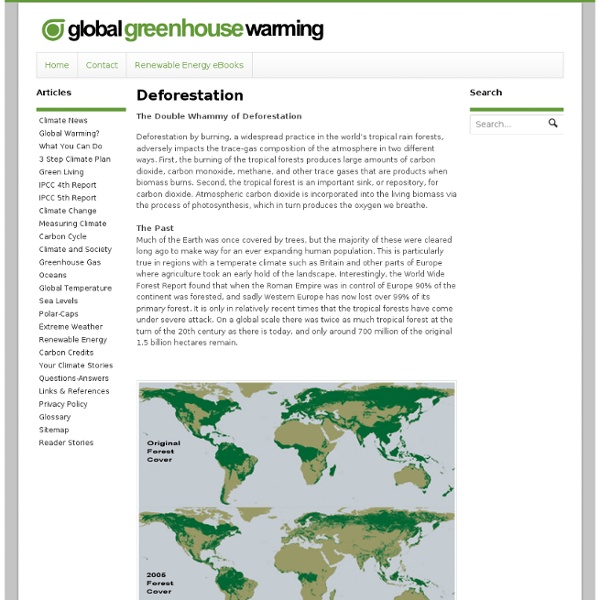Deforestation

Google's new timelapse project shows 30 years of disappearing rainforest in just seconds
It's one thing to talk about deforestation, disappearing habitats, and shrinking glaciers and water resources, and another thing entirely to demonstrate it with actual satellite imagery. And thanks to Landsat images and the Google Earth Engine, we're getting a glimpse at some key locations across the planet as they are changed by the hands of man. A series of interactive timelapse GIFs that use Landsat satellite data to display massive changes to the Earth's surface could be a potent tool for motivating individuals and organizations to take action on key issues. Google's Animated GIFs of Earth Over Time focuses our attention on key features of our planet, such as the Amazon rainforest, the coal beds of Wyoming, the Columbia Glacier, the Aral Sea, and the deserts of Saudi Arabia. "Today, we're making it possible for you to go back in time and get a stunning historical perspective on the changes to the Earth’s surface over time. © Google
'Rainforest Connection' Aims To Use Cell Phones To Stop Deforestation
If a tree falls in the forest, does it make a sound? Sure does, and a company by the name of Rainforest Connection hopes one of its cell phones will be around to hear it. The San Francisco nonprofit plans to install used Android smartphones in rainforests to help curtail illegal logging. Here's how: Ambient sounds in the rainforest will be continuously recorded and screened using the phones' microphones and onboard software. "We can find out how much forest has been cut using satellite images, but we find out after, so we cannot trace when it happens," Dwiati Novita Rini, a rainforest rehabilitation worker in Sumatra, said to New Scientist, explaining the phones' potential to enable real-time action. Alerts can be sent using cell networks that already exist wherever the devices are installed. The phones are powered using solar energy and -- eventually -- will be simple enough for locals to install them on trees themselves.
What is wood and how do trees grow?
Re: What is wood and how do trees grow? Area: Botany Posted By: Marcy LaViollette, Senior, chemical engineering, Capital High School Date: Mon Nov 17 20:20:13 1997 Area of science: Botany ID: 877589435.Bt Message: There are six main parts to the wood of a tree. 1.The outer bark protects the tree from extreme temperatures, bad weather, insects and fungi. 2.The phloem (bast) is also called the inner bark. 3.The cambium is a thin layer of cells which produce phloem on one side and sapwood on the other. 4.Sapwood is the living wood in the tree through which the raw sap rises from the roots to the leaves. 5.The heartwood consists of old cells. 6.The pith is the central core of the tree. Each year, the tree forms new cells, arranged in concentric circles called annual rings or annual growth rings. In Canada, the growing season begins in the spring. Then, towards the end of the summer, growth slows down. The following year, a new two-part ring is added. Keep asking questions! -Marcy LaViollette
Related:
Related:



